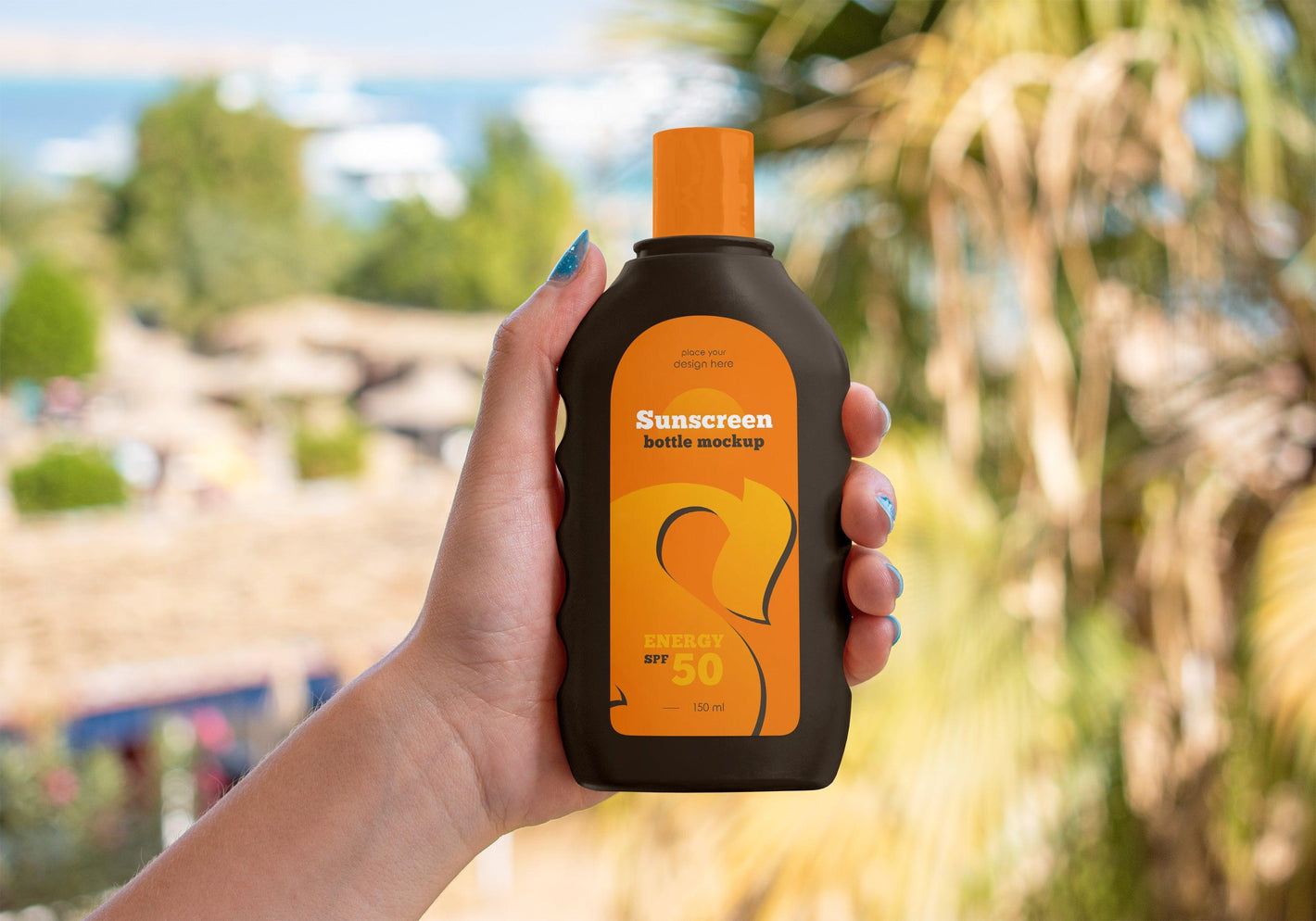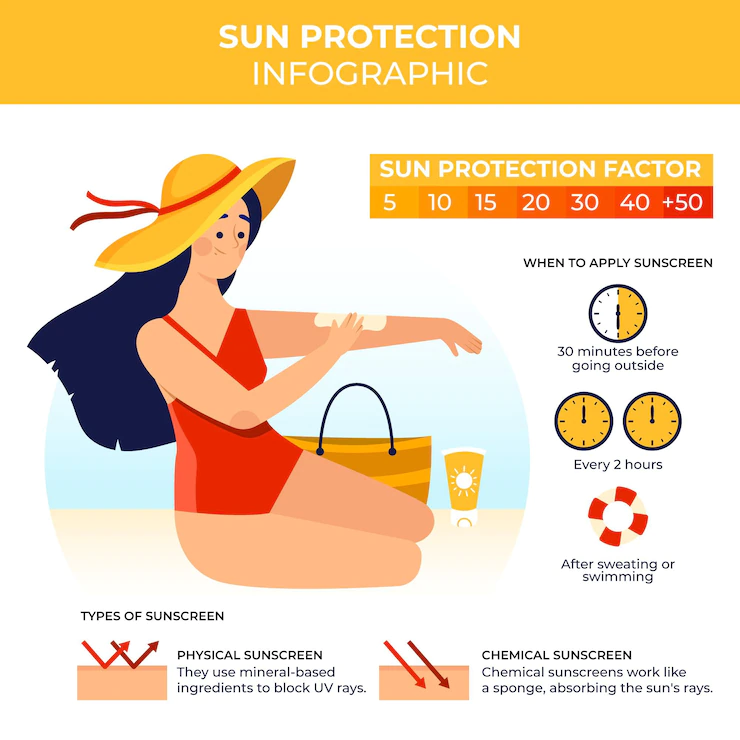Are tinted sunscreens just as effective?



There’s much to say about the biological effects of sunlight on the body, as sun radiation has both positive and negative effects on human health. Apart from the health benefits of the essential vitamin D, sunlight has also been known to cause considerable damage to the skin.
Sun's radiation comprises ultraviolet, visible light, and infrared radiation. Ultraviolet radiations ranging from 290 to 400nm account for nearly 5% of the radiations that reach the surface of the earth.
Ultraviolet Radiations are broadly classified into three categories:
UV A: As they are easily transmitted through the atmosphere, Ultraviolet A radiations account for most of the ultraviolet radiation that reaches the earth’s surface. They penetrate the skin deeper than the UV B radiations. Repeated, prolonged exposure results in skin pigmentation and ageing of the skin.
UV B: Ultraviolet B radiations are absorbed by the ozone layer to a certain extent; therefore, not all the sun’s UVB rays reach the earth’s surface. Repeated exposure to UV B has been associated with an increased risk of skin cancer. It is also known to cause redness and a burning sensation in the skin.
UV C: These rays are completely absorbed by the earth's ozone layer. Although they have the potential to damage the eye and cause burns on the skin, you may need not fear as they do not reach the earth’s surface. Artificial sources of UV C radiation like lasers and lamps may expose man to UV C radiation.
The part of the electromagnetic spectrum that can be seen by the human eye is referred to as visible light. It accounts for 44% of the radiation that reaches the earth’s surface. It is known to penetrate the skin much deeper than ultraviolet radiation. Visible light has its benefits in the field of medicine and photometry to study pigments and treat various skin conditions. The disadvantages of visible light lie in its photobiologic effects on the skin. Hyperpigmentation, erythema, and cancer are some of the well-established harmful effects of visible light. Studies have concluded that repeated exposure to visible light results in chronic pigmentation in persons with darker skin tones, while redness and inflammatory reactions have been more common among people with lighter skin tones.

Steps you can take to protect yourself from the harmful effects of sunlight include the following:
Avoid direct exposure to strong sunlight
Make use of shade when available
Wear cotton, light-coloured clothes with long sleeves and long pants
Use sunscreens.
Wear sunglasses and use lip balms that have SPF protection.
Sunscreens are topically-applied sun-blocking agents that absorb or deflect harmful sun radiation. It helps protect the skin from the damaging effects of UVA and UVB rays. They are usually available in the form of creams, lotions, gels, or sprays and may be broadly classified as:
1. Chemical or Organic Sunscreens, which absorb harmful UVA and UVB radiation and prevent them from penetrating the skin. Avobenzone, Oxybenzone, and Octisalate are some of the commonly found ingredients in Chemical Sunscreens.
2. Physical or Inorganic Sunscreens that function by forming a physical barrier on the skin and deflecting or scattering harmful UV rays. Titanium dioxide and zinc oxide are some of the commonly found ingredients in Inorganic Sunscreens. Zinc oxide in mineral sunscreen also acts as a soothing agent, providing protection against UV light.

Yes, sunscreens will help protect the skin from ultraviolet radiation to a considerable extent. But what about the effects of visible light? The hyperpigmentation, erythema, and skin changes related to skin ageing and cancer caused by exposure to visible light, certainly shouldn’t be ignored. And you need not worry, for tinted sunscreens are here to rescue you.
Tinted sunscreens are sunscreens that include iron oxides, zinc oxide and pigmentary titanium dioxide in their formulations. These components form a visible skin tone on the surface of the skin. A tinted sunscreen thus helps to reflect harmful visible light away from the skin. Based on the varying proportions of iron oxides, tinted sunscreens are available in various skin shades and thus cater to the needs of different skin tones.
Tinted sunscreens have a wide range of benefits that deem them to be superior to non-tinted sunscreens. Studies have shown broad-spectrum tinted sunscreens to be effective against visible light as well as UV A and UV B.
Tinted sunscreen is specifically recommended for persons suffering from melasma, hyperpigmentation, dark spots, and skin disorders. Certain types of dermatological conditions have a history of being precipitated or aggravated by exposure to visible light. Patients suffering from such conditions can benefit from the properties of tinted sunscreen. They help reduce the melasma relapses and the aggravating effects of visible light on the skin.
Doctors often prescribe tinted sunscreen in conjunction with other creams, ointments, or medications to treat several skin disorders. Because of their ability to block visible light, tinted sunscreens have also been effective in reducing the skin changes associated with skin ageing and cancer.
Tinted sunscreens have also been effective in protecting the skin from blue light emitted by mobiles, laptops and computer screens.
Tinted sunscreens have both cosmetic and protective functions. They are the best alternatives to non-tinted sunscreens because of their effectiveness against high-energy visible light, UVA and UV B rays. Tinted sunscreen is often used in conjunction with cosmetic agents, yielding the desired glow on the skin.
Certain sunscreens leave a white, chalky cast on the skin. A tinted sunscreen helps to limit this undesirable appearance, more or less maintaining the natural skin tone.
Being safe and gentle on the skin, they are usually preferred over non-tinted versions of sunscreens for children and persons with sensitive skin.
Tinted sunscreens, by and large, are one of the best sun-blocking and cosmetic agents on the market. Their valuable properties make them an effective, if not an ideal, sunscreen type. Being both a UV filter and a visible light filter, a tinted sunscreen is certainly a better option for sun protection and keeping the skin healthy.
Choosing a broad-spectrum tinted sunscreen with an SPF of at least 30 or above would be a good choice to protect yourself from the harmful effect of sunlight.
Find our range of skin care products including sunscreen, moisturisers and scar-reducing lotions on our Skin Care page, click here to view.










Plus get the inside scoop on our latest content and updates in our monthly newsletter.